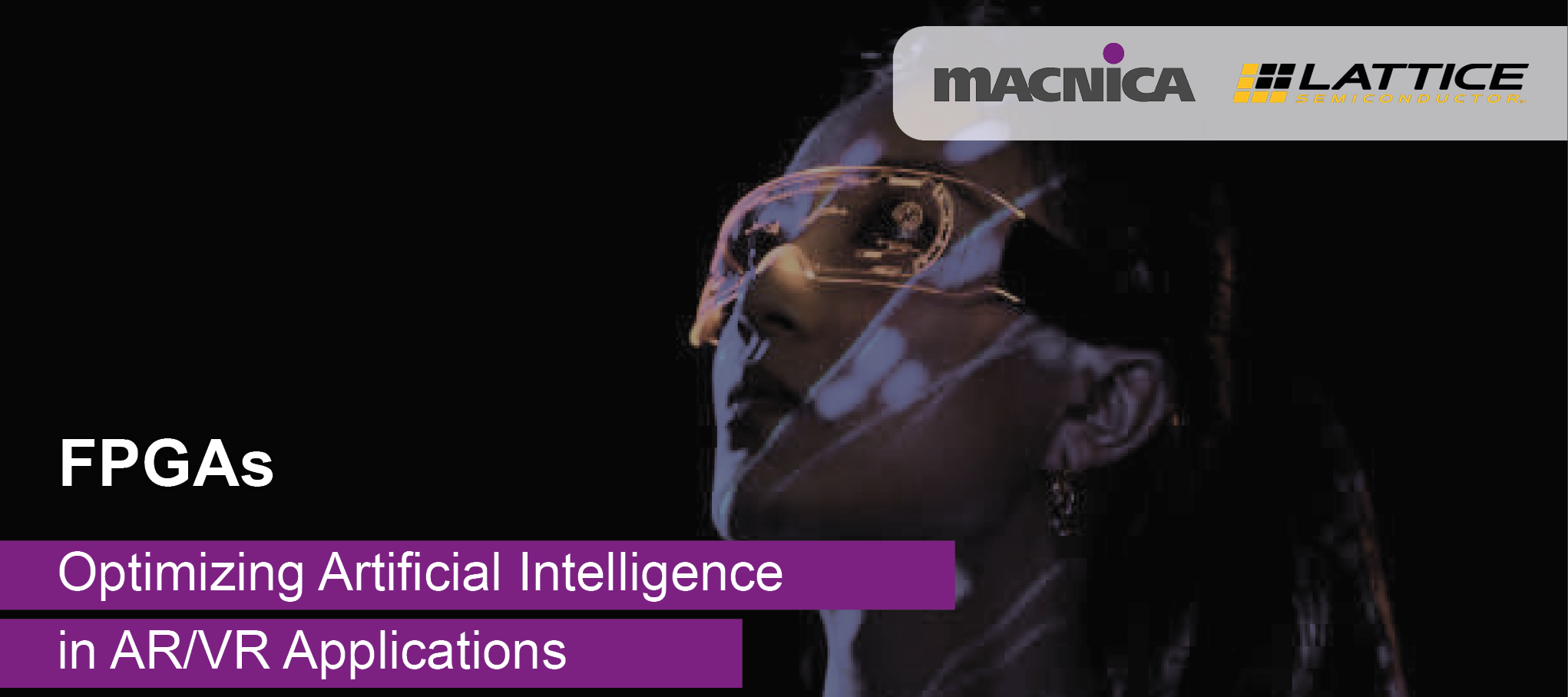Optimizing AI in AR/VR with FPGA Solutions
As AR/VR devices become more advanced, incorporating AI features such as real-time object detection and gesture recognition, the challenge of managing power consumption and heat generation has become increasingly complex.
With limited space for cooling systems and a growing demand for extended battery life, developers must innovate to bring these technologies to life in a way that maximizes functionality while maintaining user comfort.
Overcoming Power and Heat Constraints in AR/VR
As AI becomes a standard feature in AR/VR devices, manufacturers are faced with a difficult choice.
On one hand, they want to offer the best possible AI-powered features to stay ahead in the competitive market. On the other hand, they need to ensure that these features don’t drain the battery too quickly or cause the device to overheat, which would reduce user comfort and potentially damage the hardware.
Cooling solutions like fans are impractical in the compact designs required for AR and VR devices, and heavy reliance on GPU-based solutions often leads to excessive power consumption and heat generation. With the right approach, it's possible to integrate AI seamlessly into AR/VR systems without compromising on power or thermal management.
How Lattice FPGAs Empower Efficient AI Integration
Lattice Semiconductor provides a suite of ultra-low-power FPGA solutions that enable developers to integrate AI in AR/VR devices without sacrificing energy efficiency or increasing heat output. These FPGAs provide the necessary resources to implement intelligent systems while optimizing for power efficiency and compact design, making them ideal for a variety of applications, from always-on intelligence to high-speed processing.
Lattice iCE40 UltraPlus: Efficient Always-On AI

Designed for power-sensitive applications, the iCE40 UltraPlus consumes just a few milliwatts, making it ideal for always-on AI tasks like voice detection and motion tracking. Despite its compact size, it enables wake-on-voice and gesture recognition, key features in wearable AR/VR systems.
Key Features:
- Power Consumption: 75 µA standby, 1-10 mA active
- AI Processing: 5K LUTs, embedded DSP blocks
- Compact & Flexible: Small footprint, multiple I/O options
Lattice CrossLink-NX: High-Speed Vision Processing

Built for AI-driven image and video processing, the CrossLink-NX combines low power with high-speed interfaces like MIPI, essential for AR/VR displays and cameras.
Key Features:
- Up to 75% lower power than competing solutions
- Fast startup: 3 ms instant-on, 8 ms full activation
- High-speed connectivity: MIPI (2.5 Gbps), PCIe (5 Gbps)
- Ultra-compact form factor (4mm x 4mm)
Lattice CertusPro-NX: Advanced AI Inference & Connectivity

The CertusPro-NX is designed for high-performance computing in power- and space-constrained environments. With exceptional energy efficiency, rich memory resources, and high-speed I/O capabilities, it is ideal for advanced applications such as AR/VR, AI edge processing, and sensor fusion.
Key Features:
- Up to 100K logic cells and 156 DSP blocks (18×18 multipliers) for high-performance compute tasks?
- Fast configuration: I/O ready in 4 ms, full device in under 30 ms.
- LPDDR4/DDR3/LPDDR2 support at speeds up to 1066 Mbps.
- Robust security with AES-256 encryption and ECDSA bitstream authentication.
Lattice FPGAs Driving Real-World AI Applications in AR/VR
Lattice FPGAs bring AI-driven intelligence to AR/VR devices without compromising battery life or overheating. Here are three ways they enhance user experience while maintaining efficiency:
- Human Detection
Detecting human presence is a key function in AR/VR devices, whether to optimize energy consumption or enhance user safety.

Traditional infrared sensors often produce false positives, detecting non-human objects. The Lattice CertusPro-NX and CrossLink-NX enable AI-powered human detection, filtering out irrelevant signals to ensure accurate recognition. This is particularly useful in industrial safety, where alerts can be triggered if unauthorized personnel enter restricted zones.
For simpler applications, the iCE40 UltraPlus provides endpoint AI functionality, enabling low-power presence detection to activate power-saving features like automatic screen dimming or standby mode.
- Gesture Detection
Touchless interaction is a key evolution in AR/VR.

The Lattice iCE40 UltraPlus enables energy-efficient gesture recognition, supporting both static gestures (like open/closed hand shapes) and dynamic motions (such as taps or swipes). Its real-time AI processing adapts to different environments, making it ideal for wearables and always-on AR/VR systems.
- Personal authentication
Securing access to AR/VR devices is essential, whether for industrial applications or consumer privacy. Traditional authentication methods, such as passwords or PIN codes, can be inconvenient and insecure. AI-powered biometric authentication provides a seamless and reliable alternative.

The Lattice CertusPro-NX enables real-time facial and voice recognition with ultra-low power consumption, making it an ideal solution for AR/VR devices that require continuous authentication without draining the battery. In industrial settings, this technology ensures that only authorized personnel can operate specific equipment, preventing unauthorized use and enhancing workplace safety. For consumer applications, facial authentication allows users to access their AR/VR systems instantly, providing a secure yet frictionless experience.
With Lattice FPGAs, you can achieve the perfect balance between AI functionality, energy efficiency, and user experience. These solutions provide developers with the tools to create cutting-edge AR/VR devices that offer fast response times and advanced capabilities.
Looking to optimize your AR/VR system with AI? Get in touch and let’s start a conversation.

